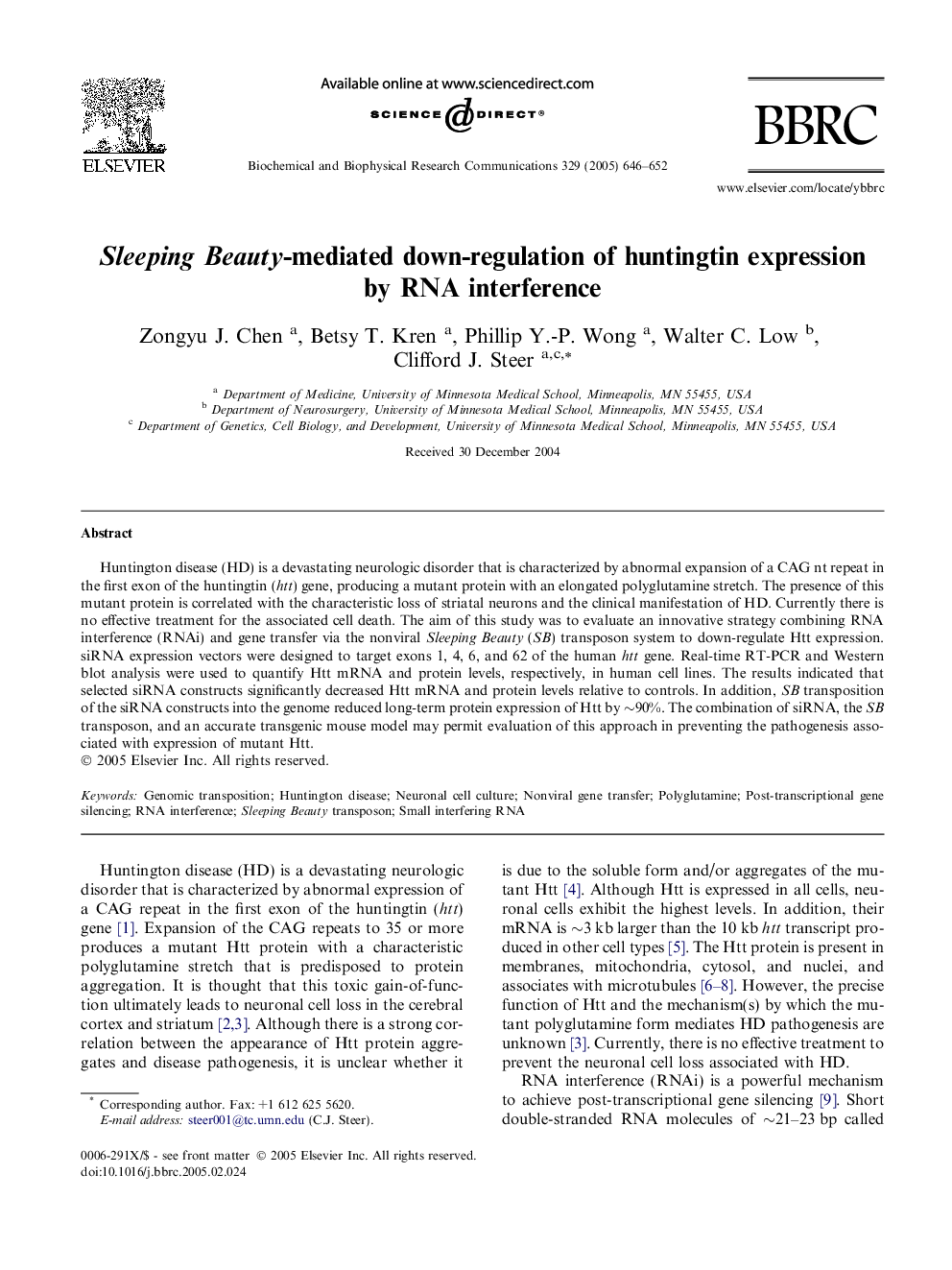| Article ID | Journal | Published Year | Pages | File Type |
|---|---|---|---|---|
| 10770752 | Biochemical and Biophysical Research Communications | 2005 | 7 Pages |
Abstract
Huntington disease (HD) is a devastating neurologic disorder that is characterized by abnormal expansion of a CAG nt repeat in the first exon of the huntingtin (htt) gene, producing a mutant protein with an elongated polyglutamine stretch. The presence of this mutant protein is correlated with the characteristic loss of striatal neurons and the clinical manifestation of HD. Currently there is no effective treatment for the associated cell death. The aim of this study was to evaluate an innovative strategy combining RNA interference (RNAi) and gene transfer via the nonviral Sleeping Beauty (SB) transposon system to down-regulate Htt expression. siRNA expression vectors were designed to target exons 1, 4, 6, and 62 of the human htt gene. Real-time RT-PCR and Western blot analysis were used to quantify Htt mRNA and protein levels, respectively, in human cell lines. The results indicated that selected siRNA constructs significantly decreased Htt mRNA and protein levels relative to controls. In addition, SB transposition of the siRNA constructs into the genome reduced long-term protein expression of Htt by â¼90%. The combination of siRNA, the SB transposon, and an accurate transgenic mouse model may permit evaluation of this approach in preventing the pathogenesis associated with expression of mutant Htt.
Keywords
Related Topics
Life Sciences
Biochemistry, Genetics and Molecular Biology
Biochemistry
Authors
Zongyu J. Chen, Betsy T. Kren, Phillip Y.-P. Wong, Walter C. Low, Clifford J. Steer,
